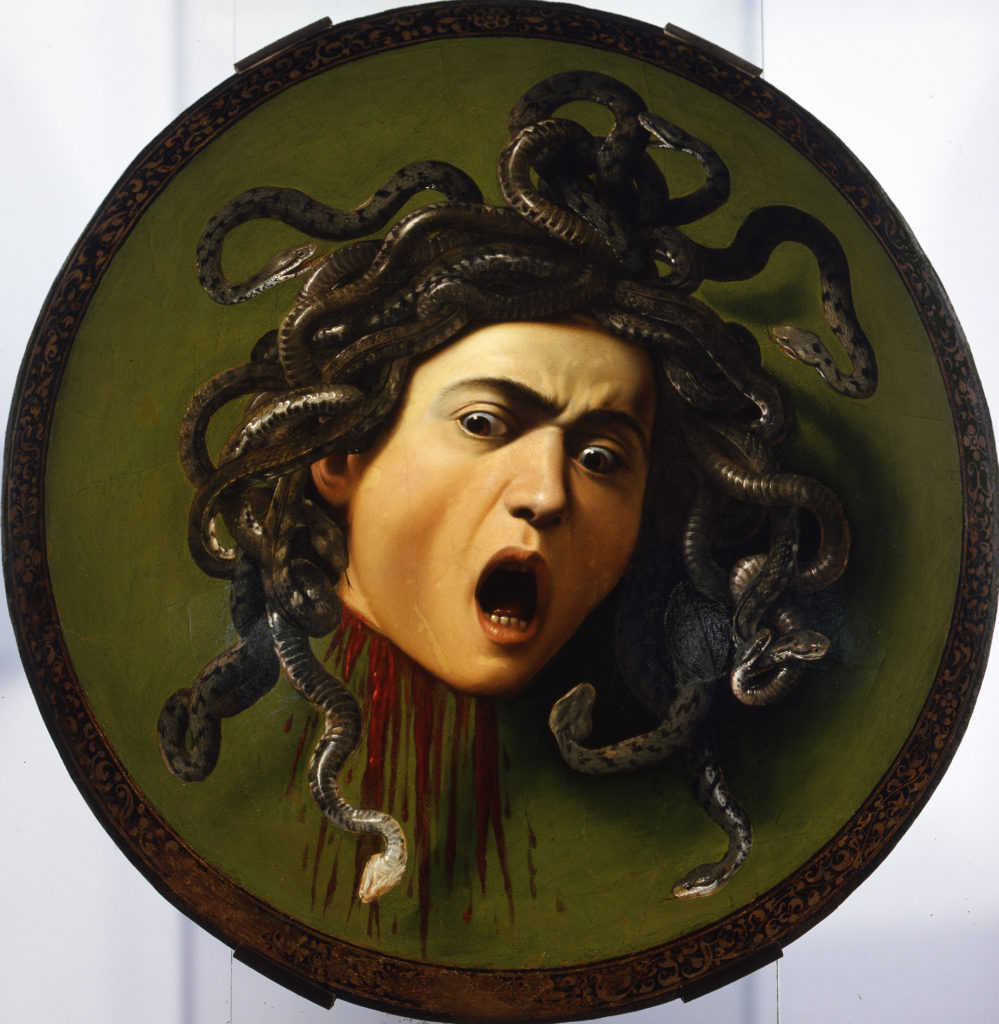Masterpiece Story: The Starry Night by Vincent van Gogh
During his stay in the Saint-Rémy hospital in southern France, Vincent van Gogh created The Starry Night. It became one of his most recognizable...
Valeria Kumekina 24 March 2024
Caravaggio’s art epitomizes the essence of Baroque art. The artist, known for close physical observation with a dramatic use of chiaroscuro, can be called the father of tenebrism. He made the technique a dominant stylistic element, darkening shadows and transfixing subjects in bright shafts of light. His works are also one of the most influential for the epoch – especially for Peter Paul Rubens, Jusepe de Ribera, Gian Lorenzo Bernini, Rembrandt, and artists in the following generation who were heavily under his influence were called the Caravaggisti or Caravagesques, as well as tenebrists or tenebrosi (“shadowists”).
Today, we are going to talk about this severed head – the head of Medusa, the gorgon who had hair of living snakes. Anyone who looked at her was turned to stone. She was decapitated by the hero Perseus who firstly used a shining shield received from the goddess Athena to avoid looking at Medusa directly.
Here, we have a horrifying image of a decapitated head of Medusa, for which the model was apparently a male youth. Medusa’s head is severed but still conscious. The mythical creature just realized their mortality–in the most horrible way. Blood pours from Medusa’s head in thick streaks. She screams in silence. The serpents are only silent witnesses.

Caravaggio was commissioned to make this masterpiece as a gift for the Grand Duke of Tuscany, Ferdinando I de Medici. It was supposed to enter the Medici collection in Florence (to the Armory of the Uffizi), as a competition against Leonardo da Vinci, who by that time had been dead for 80 years.
Medusa was painted on a wooden shield, which alluded to a story about the young Leonardo, whose father once asked him to decorate a shield. Leonardo went into the fields and collected snakes, lizards, and insects, assembling them into a hybrid monster which he painted on the object. The broad wooden piece is also, of course, referring to the shield from Athena which was cunningly used to exploit Medusa’s power to petrify people. This iconography was often used by the Medici to represent their military power.
Caravaggio’s Medusa exists in two versions. The first was created in 1596 and the other, presumably, in 1597. The first version (1596) is also known as Murtola, after poet Gaspare Murtola (d. 1624), who wrote of it:
Flee, for if your eyes are petrified in amazement, she will turn you to stone.
This work is privately owned.
The second version, shown here, is slightly bigger (60×55 cm) and is not signed, though often dated 1597. This work is held in the Uffizi Gallery in Florence.
DailyArt Magazine needs your support. Every contribution, however big or small, is very valuable for our future. Thanks to it, we will be able to sustain and grow the Magazine. Thank you for your help!